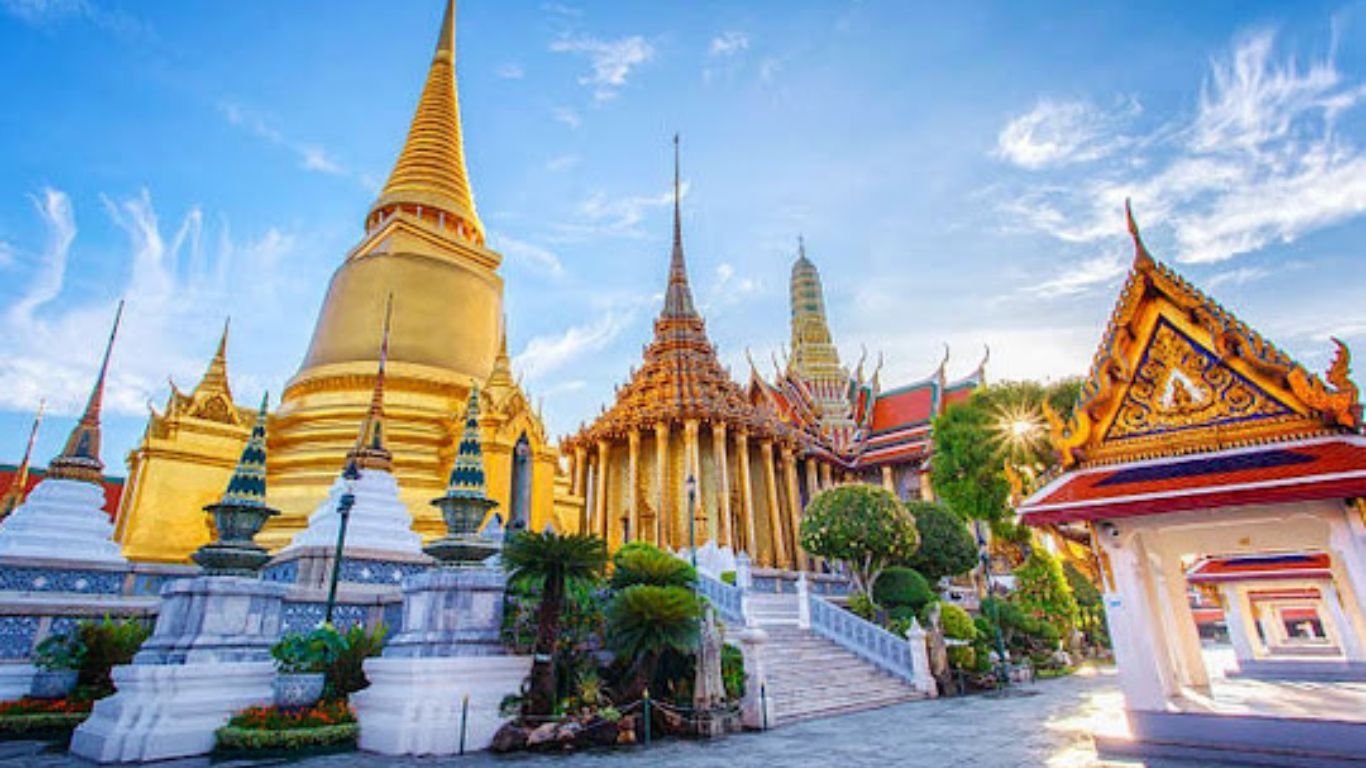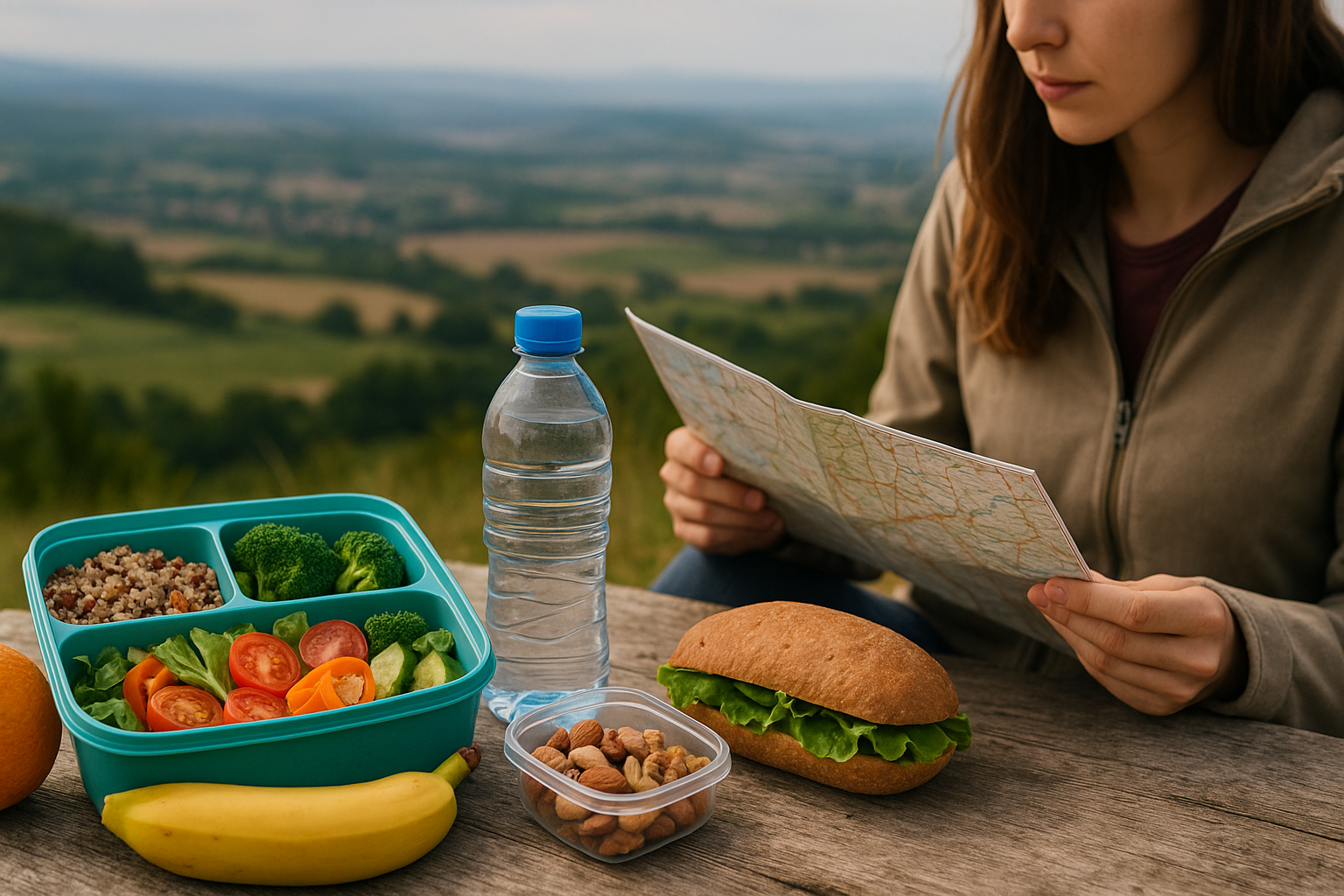Introduction: Asia’s Dynamic Urban Landscapes
Asia is no longer just a destination for temple trails and tropical retreats—it’s the epicenter of urban transformation. In 2025, more travelers are turning their attention to the top Asian cities for travelers, seeking places where ancient streets meet ultramodern skylines, and where heritage isn’t preserved in glass cases but pulsing in the rhythm of daily life.
These cities defy traditional itineraries. They are alive with chaotic markets, underground art scenes, rooftop bars with 360° views, and neighborhoods that tell stories in a hundred dialects. Asia’s urban powerhouses aren’t just spaces to visit—they are experiences to live.
What makes this continent particularly compelling is the contrast. In one moment, you’re surrounded by serene temple courtyards; in the next, you’re riding a driverless train past skyscrapers stitched with LED screens. This rare, electric duality is what makes the top Asian cities for travelers so enticing in 2025.
From seasoned explorers to first-timers ready to trade the ordinary for the exhilarating, Asia’s cities are setting the tone for what urban travel looks like in the future—and the future is now.
A Shift in Travel Trends
The traveler of 2025 looks vastly different from even five years ago. The rise of remote work, climate consciousness, and social media-fueled discovery has redefined what people seek on their journeys. Gone are the days when tourism revolved solely around landmarks and luxury. Today’s explorers crave immersion, spontaneity, and purpose.
This change has pushed the top Asian cities for travelers to evolve rapidly. They’re investing in creative districts, walkable zones, and hyper-local experiences that go beyond the guidebook. Cities like Seoul, Taipei, and Bangkok are responding with cultural festivals, pop-up markets, and community-led tours that showcase the soul of the city—not just its skyline.
Urban exploration is no longer just about seeing the sights—it’s about living the layers. And Asia is leading the charge in this new era of meaningful, city-based travel.
What Makes a City “Urban Explorer” Friendly?
An “urban explorer-friendly” city isn’t just a grid of concrete and glass—it’s a living environment built for curiosity. The best cities for this kind of travel share key traits:
- Walkability: Compact neighborhoods that encourage unplanned discovery.
- Cultural Density: Museums, street performances, temples, galleries—all within reach.
- Efficient Transit: Trains, buses, and bike lanes that allow for seamless city flow.
- Authentic Local Flavors: Whether it’s hawker stalls in Singapore or ramen shops in Osaka, food becomes a journey.
- Safety & Cleanliness: Especially important for solo travelers and digital nomads.
The top Asian cities for travelers strike a balance between chaos and coherence. They invite you to get lost without ever feeling lost.
Methodology for City Selection
Choosing the top Asian cities for travelers wasn’t based on trends alone. Our selections were curated through a multifaceted approach:
- Cultural & Historical Relevance – Cities that have preserved heritage while embracing change.
- Traveler Experience – Based on online reviews, rankings (e.g., Time Out, Lonely Planet), and firsthand accounts.
- Infrastructure & Accessibility – Quality of transportation, digital connectivity, and ease of navigation.
- Urban Personality – Cities with unique narratives, from architectural styles to street-level energy.
- Sustainability & Innovation – Those actively investing in green spaces, smart city tech, and local economies.
Every city featured in this article offers something that makes urban exploration unforgettable—whether it’s rooftop perspectives or underground music scenes.
The Top 11 Asian Cities for Urban Exploration in 2025
Urban exploration is not about ticking off tourist traps—it’s about sinking into the rhythm of a place, absorbing its contrasts, and finding its soul in the unexpected. The following are the top Asian cities for travelers who crave discovery beyond the surface. Each city offers a layered experience that reflects Asia’s energy, complexity, and creativity in 2025.
Table of Contents
1. Tokyo, Japan: Futuristic Fusion
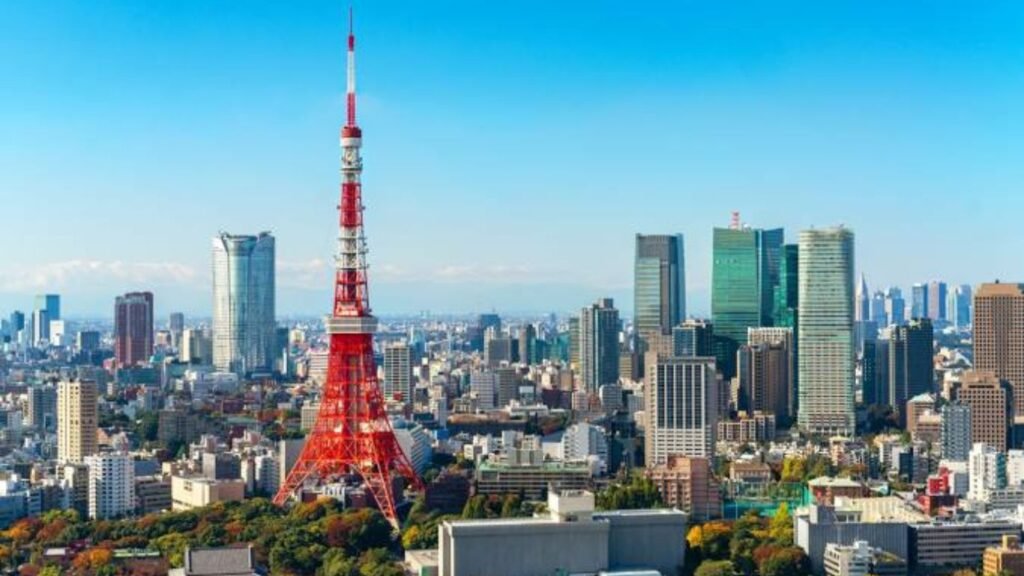
Tokyo doesn’t whisper its identity—it roars it with neon signs, bullet trains, and a seamless blend of hyper-modern and deeply traditional. This megacity is a dream for urban explorers who thrive on contrast.
Start your journey in Shibuya, home to the world’s busiest crossing and a skyline glittering with digital billboards. From there, dive into Asakusa, where the 7th-century Senso-ji temple transports you to Edo-period serenity. Tokyo rewards the curious—hidden bars in Golden Gai, vintage record shops in Shimokitazawa, and avant-garde fashion in Harajuku all coexist in perfect contradiction.
Public transportation is unmatched: Tokyo’s subway network is a marvel of punctuality and efficiency, allowing travelers to effortlessly hop between neighborhoods. The food scene is just as diverse—Michelin-starred sushi counters sit steps away from hole-in-the-wall ramen joints that’ll change your life.
Tokyo is not only one of the top Asian cities for travelers, it’s a place where the future lives comfortably with the past—and invites you into both.
2. Seoul, South Korea: Cultural Confluence

Seoul is where the old meets the ultra-modern—and makes it look effortless. For urban explorers, the city is a captivating maze of contrasts. Grand palaces like Gyeongbokgung echo centuries of royal history, while just a subway ride away, the hyper-trendy streets of Gangnam pulse with K-pop culture and high fashion.
The city’s neighborhoods each have their own personality. Hongdae is an artistic playground full of street performers and indie boutiques. Itaewon celebrates global diversity with international cuisine and buzzing nightlife. Meanwhile, Bukchon Hanok Village preserves traditional hanok houses, offering a tranquil break from Seoul’s electric pace.
Public transport here is exemplary—clean, safe, and intuitive, even for first-time visitors. Apps like Naver Map and Kakao Metro make navigating this vast metropolis easy. What makes Seoul truly special is how it invites you to interact. Locals are proud of their city and quick to share their stories, whether it’s through a tea ceremony, a night market snack, or a guided hike along the Seoul Fortress Wall.
In 2025, Seoul stands tall as one of the top Asian cities for travelers, thanks to its cultural complexity, technological sophistication, and unmatched vibrancy.
3. Singapore: Architectural Marvels

Singapore is a masterclass in city planning—sleek, efficient, and visionary. It’s not just one of the top Asian cities for travelers; it’s an urban laboratory where innovation meets elegance. Known for its futuristic skyline and immaculate streets, Singapore surprises at every corner with its blend of cultures, cuisines, and eco-conscious design.
Begin at Marina Bay Sands, the iconic structure that looks like it was plucked from a sci-fi movie. From its sky-high infinity pool, take in a panoramic view of the city’s shimmering skyline. Right next door, Gardens by the Bay offers a botanical spectacle—giant “Supertrees” light up each night in a performance that merges nature and technology.
But Singapore isn’t all spectacle. In neighborhoods like Tiong Bahru, art deco flats house cozy bookstores, hip cafes, and old-school bakeries. Little India and Kampong Glam brim with heritage, from Hindu temples to Islamic architecture. The city’s multiculturalism makes it feel like several worlds in one.
Urban explorers can traverse it all easily—Singapore’s MRT system is clean, cheap, and brilliantly mapped. Street food legends thrive in hawker centres like Maxwell and Lau Pa Sat, offering Michelin-worthy meals at backpacker prices.
Singapore may be small in size, but it’s endlessly rich in layers. With its impeccable organization, creative neighborhoods, and emphasis on green living, it firmly earns its spot among the top Asian cities for travelers in 2025.
4. Bangkok, Thailand: Vibrant Chaos
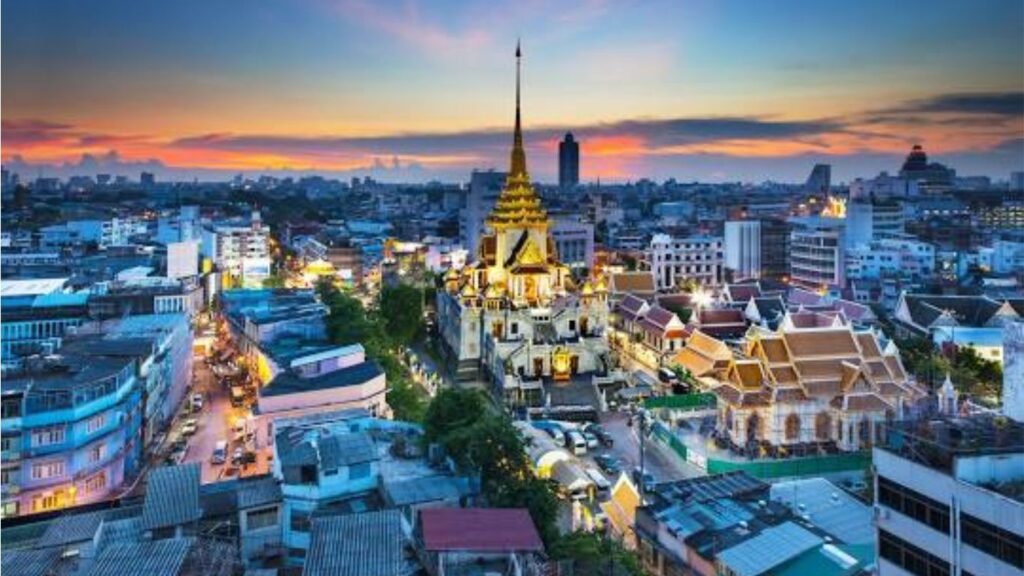
Bangkok isn’t subtle. It’s a sensory whirlwind of tuk-tuks zipping through traffic, sizzling street food stalls, golden temples, and nightlife that never sleeps. For travelers who thrive on energy and unpredictability, Bangkok is an essential stop—and one of the most thrilling top Asian cities for travelers in 2025.
Begin your exploration at the majestic Grand Palace and nearby Wat Pho, home to the giant reclining Buddha. These sacred landmarks anchor the city’s spiritual heritage. Yet just across the river, you’ll find the hipster haven of Thonburi, with quiet canals, graffiti art, and hidden coffee shops. Bangkok is a city of dualities—and that’s where its magic lies.
Public transportation is surprisingly effective, thanks to the BTS Skytrain and MRT subway—offering a cool escape from the city’s tropical heat. Adventurous travelers might take the Chao Phraya Express Boat, offering river views of historic sites for less than a cup of coffee.
But it’s in the street-level scenes where Bangkok truly comes alive. Chatuchak Weekend Market overwhelms with 15,000 stalls. Yaowarat Road in Chinatown serves legendary dishes deep into the night. Rooftop bars in Sathorn and Sukhumvit look down on a city that never loses momentum.
In 2025, Bangkok remains one of the top Asian cities for travelers who crave a mix of tradition, grit, and spectacle—all wrapped into one unforgettable experience.
5. Hong Kong, China: Vertical Cityscapes

Hong Kong is a city of impossible skylines, dramatic peaks, and relentless movement. It’s where glass towers stretch toward the clouds, while traditional trams rattle past dim sum parlors below. For those drawn to density, drama, and duality, Hong Kong remains one of the most exhilarating top Asian cities for travelers in 2025.
The city’s architecture is a vertical marvel. Victoria Peak offers sweeping views of Central’s high-rises, Victoria Harbour, and the Kowloon Peninsula. Yet it’s the journey up—the vintage Peak Tram—that begins your adventure with retro flair.
Explorers love neighborhoods like Sham Shui Po, where independent designers, fabric vendors, and local eateries create a raw, authentic vibe. Meanwhile, SoHo and Tsim Sha Tsui pulse with international energy—art galleries, rooftop lounges, and boutique hotels make them urban magnets.
Hong Kong’s MTR is one of the most advanced subway systems in Asia, with routes stretching across islands and borders. For a scenic shortcut, hop on the Star Ferry—a charming relic of the colonial era still used by locals daily.
Though compact, Hong Kong is layered in complexity—from Cantonese opera houses to avant-garde installations at Tai Kwun. That blend of Eastern heritage and global ambition secures its spot among the top Asian cities for travelers this year.
6. Taipei, Taiwan: Hidden Alleys and Night Markets
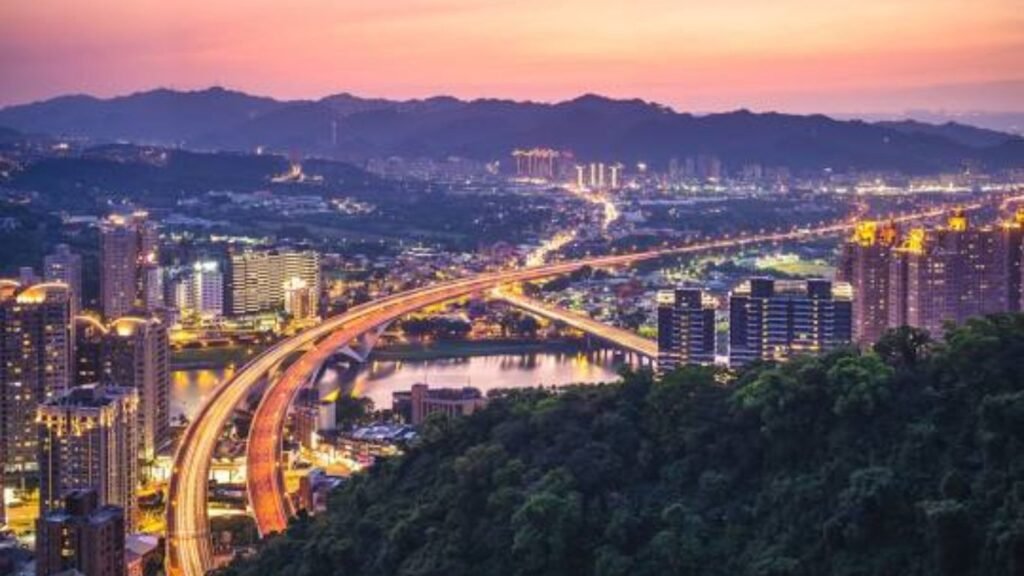
Taipei is subtle brilliance—never overwhelming, but always surprising. It’s a city that rewards those who slow down and pay attention. For urban explorers looking for authenticity over spectacle, Taipei easily ranks among the most rewarding top Asian cities for travelers in 2025.
The city’s rhythm is found in its contrasts. Ancient temples like Longshan sit peacefully beside modern apartment blocks, while Ximending bustles with youth culture, street art, and open-air performances. Taipei’s backstreets are a labyrinth of old teahouses, tiny bookstores, and vintage shops that feel frozen in time.
Night markets are the soul of the city. Shilin, Ningxia, and Raohe offer steaming bowls of beef noodle soup, stinky tofu, and oyster omelets that capture Taiwan’s culinary identity. And while food takes center stage, markets also showcase crafts, live music, and a genuine sense of community.
Getting around is effortless thanks to the Taipei MRT, one of Asia’s most user-friendly metro systems. Signage in English, clean platforms, and short wait times make city-hopping intuitive. The YouBike system, integrated into the city’s transit network, offers another layer of mobility—and sustainability.
In 2025, Taipei’s blend of nostalgia and modern ease, its human scale, and its endless alleyway surprises make it one of the most quietly unforgettable top Asian cities for travelers.
7. Kuala Lumpur, Malaysia: Diverse Districts
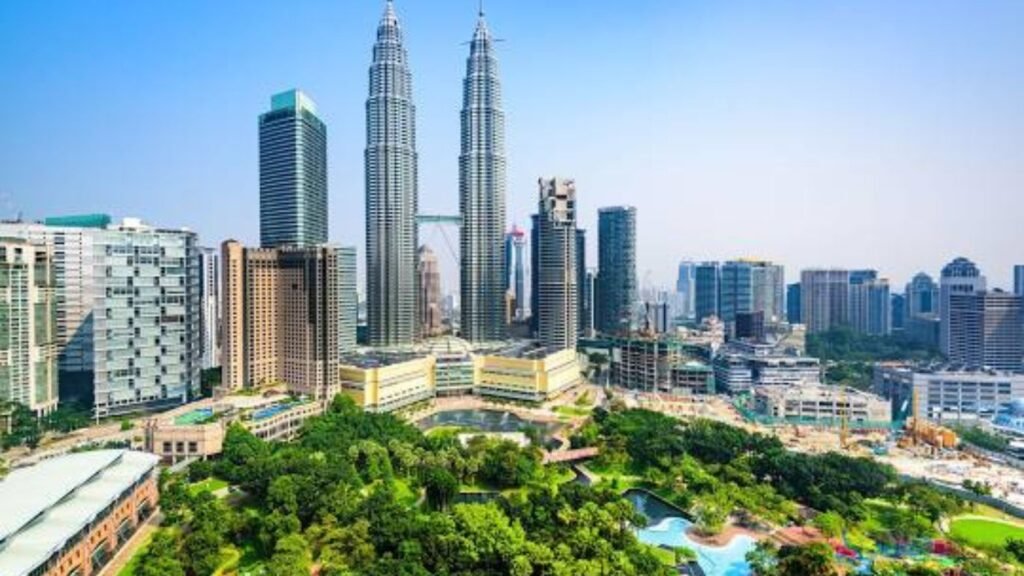
Kuala Lumpur is where traditions collide, mingle, and rise skyward. It’s one of the most culturally rich top Asian cities for travelers in 2025, thanks to its layered history and diverse communities. Here, Malay, Chinese, and Indian heritage aren’t just visible—they shape every corner of the city.
The skyline is instantly recognizable, dominated by the Petronas Twin Towers—a symbol of progress that mirrors KL’s ambitions. But for urban explorers, the real treasures lie at street level. Kampung Baru preserves old Malay houses and traditional eateries, while Brickfields (also known as Little India) pulses with color, incense, and Bollywood soundtracks. Meanwhile, Chinatown’s Petaling Street buzzes with bargain stalls and noodle shops that date back generations.
What sets KL apart is how it delivers modern comforts without losing authenticity. Rooftop bars in Bukit Bintang overlook prayer calls from nearby mosques. Colonial architecture in Merdeka Square faces off with steel-and-glass mega malls. It’s a city of contrasts that works—and works well.
Public transportation is rapidly improving, with the MRT, LRT, and monorail connecting the major hubs. The new Mass Rapid Transit lines continue to expand, making it easier than ever to explore.
Kuala Lumpur’s open spirit, deep flavors, and evolving infrastructure position it solidly among the top Asian cities for travelers seeking both the global and the grounded.
8. Hanoi, Vietnam: Old Quarter Charm
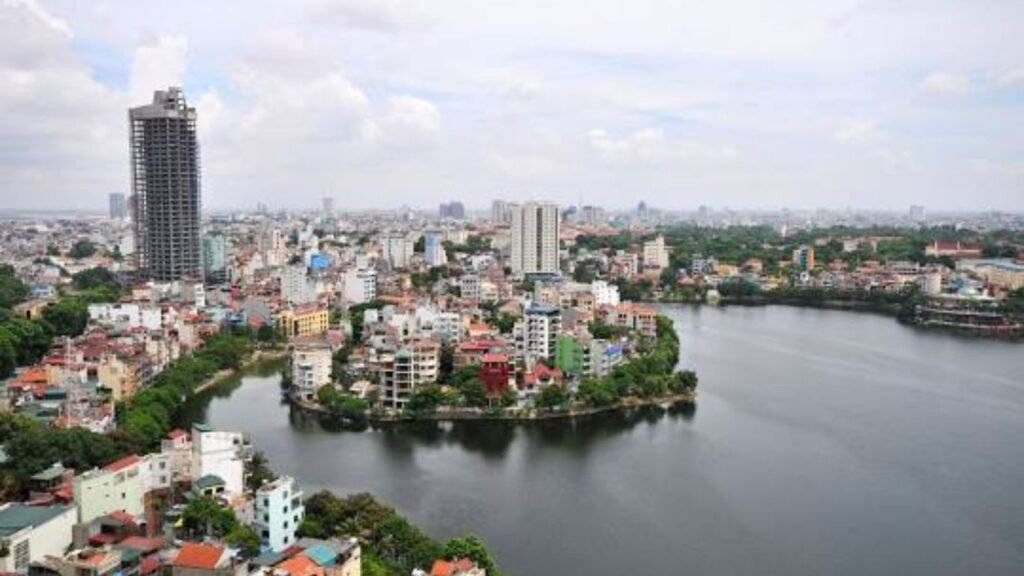
Hanoi is a living museum, a city where the echoes of French Indochina meet the heartbeat of modern Vietnam. Narrow streets, buzzing scooters, and steaming bowls of pho set the tone in this deeply atmospheric capital—an absolute must on any list of top Asian cities for travelers in 2025.
The heart of Hanoi lies in its Old Quarter, a warren of alleys named after the crafts once produced there—Silk Street, Silver Street, Bamboo Street. Walking these winding lanes feels like time travel, where crumbling colonial facades and ornate pagodas stand guard over a flurry of local commerce and culture.
Urban explorers will find no shortage of depth here. Sip egg coffee at a street-side café near Hoan Kiem Lake, then take in a traditional water puppet show that dates back to the 11th century. Venture to Train Street, where locomotives pass within inches of the buildings—a surreal, uniquely Hanoian experience.
While Hanoi can feel chaotic at first, it rewards patience and observation. Public transport is still developing, but ride-hailing apps like Grab and local motorbike taxis make getting around simple and cheap. And the food—rich, fragrant, and fiercely local—turns every meal into an experience.
Hanoi’s charm is unpolished, unfiltered, and deeply authentic. It’s exactly the kind of city that defines the top Asian cities for travelers—where every corner has a story, and every wrong turn leads to a new discovery.
9. Osaka, Japan: Culinary Adventures
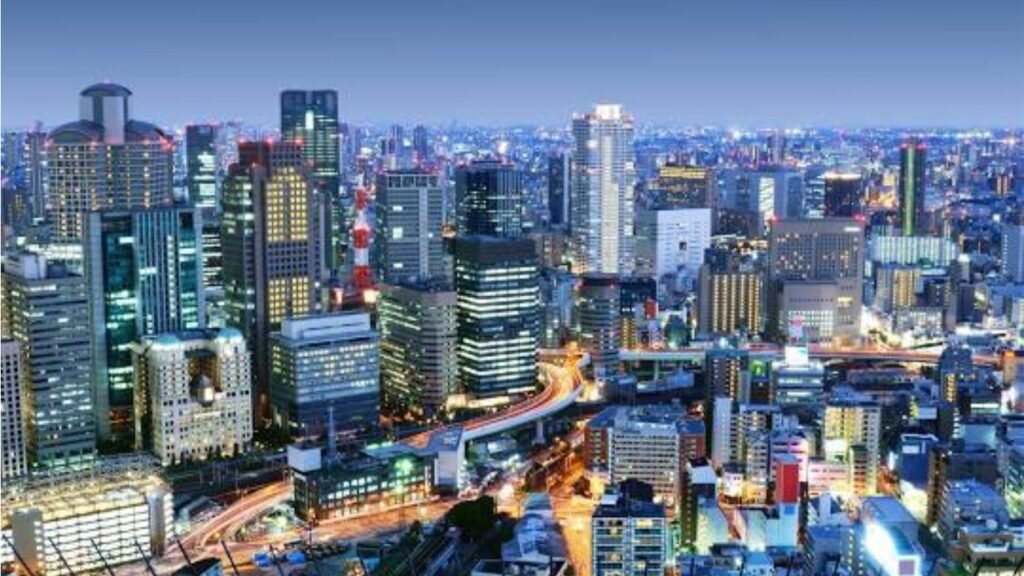
Osaka doesn’t try to impress with grandeur—it seduces with flavor, humor, and grit. If Tokyo is Japan’s brain, Osaka is its stomach and soul. For travelers who taste their way through cities, Osaka easily ranks among the most delicious and dynamic top Asian cities for travelers in 2025.
The city’s culinary pride is more than a slogan—it’s a lifestyle. Locals embrace the concept of kuidaore, or “eat until you drop.” Head to Dotonbori, where neon signs glow over canal-side walkways and street vendors serve up takoyaki (octopus balls) and okonomiyaki (savory pancakes) fresh off the grill. It’s not a sideshow—it’s the main act.
Beyond the food, Osaka is unapologetically itself. Shinsekai offers retro charm and deep-fried skewers, while Amerikamura buzzes with youth fashion and alternative culture. For history lovers, Osaka Castle stands proudly amid modern high-rises, a symbol of the city’s resilience and strength.
Transportation is a breeze with Osaka’s extensive metro system, and it’s perfectly positioned for day trips to Kyoto, Nara, and Kobe. But honestly, you may never want to leave—the warmth of the people, the street chatter, and the late-night ramen joints pull you in like a hometown you never knew you had.
In 2025, Osaka reasserts itself as one of the top Asian cities for travelers who crave raw authenticity and the kind of hospitality that feels like an embrace.
10. Jakarta, Indonesia: Emerging Metropolis
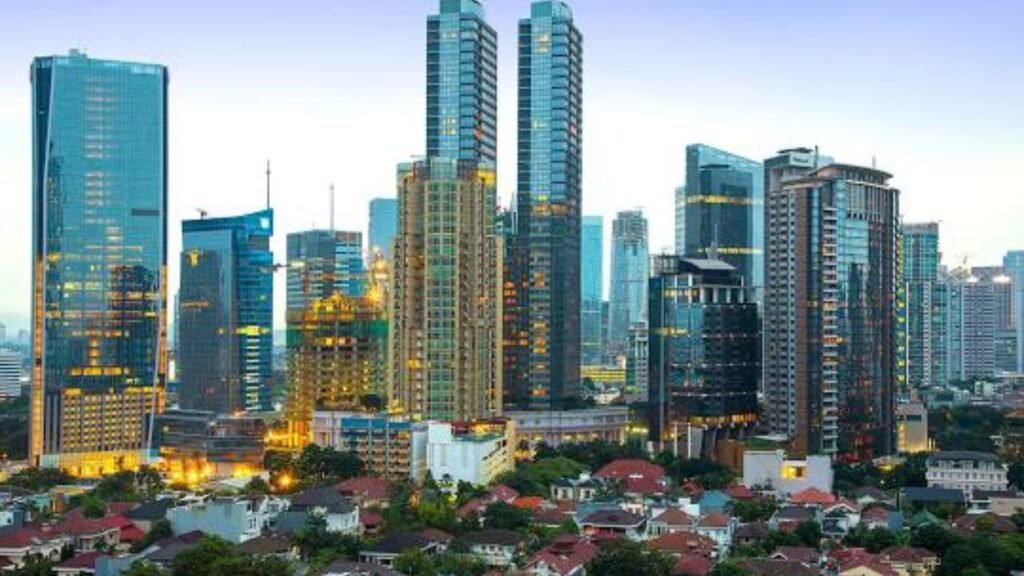
Jakarta may not have always been top of mind for urban adventurers, but that’s changing quickly. In 2025, Indonesia’s sprawling capital is stepping into its own as one of the top Asian cities for travelers, especially those seeking raw energy, local creativity, and an unfiltered look at urban Southeast Asia.
This city of over 11 million pulses with momentum. Its layered identity—shaped by Dutch colonial heritage, Islamic influence, and diverse ethnic cultures—can be seen in its neighborhoods. Kota Tua (Old Town) is a time capsule of colonial architecture and cobblestone streets, now rejuvenated by hip cafes, bike tours, and cultural centers. Nearby, Glodok—Jakarta’s Chinatown—offers historic temples and bustling markets with roots centuries deep.
Jakarta’s urban sprawl is real, but so is its resilience. The city is investing in infrastructure, like the expanding MRT system, which has made exploring central districts easier than ever. Meanwhile, new creative hubs such as M Bloc Space and Kemang are redefining the urban experience with galleries, live music, and indie fashion.
Food, as always in Indonesia, is phenomenal—don’t miss out on nasi goreng, gado-gado, or a late-night satay grill near Blok M. And while Jakarta may not offer immediate polish, it rewards those who dig beneath the surface.
For urban explorers seeking the real, the rising, and the richly textured, Jakarta is fast becoming one of the most exciting top Asian cities for travelers in 2025.
11. Busan, South Korea: Coastal Culture
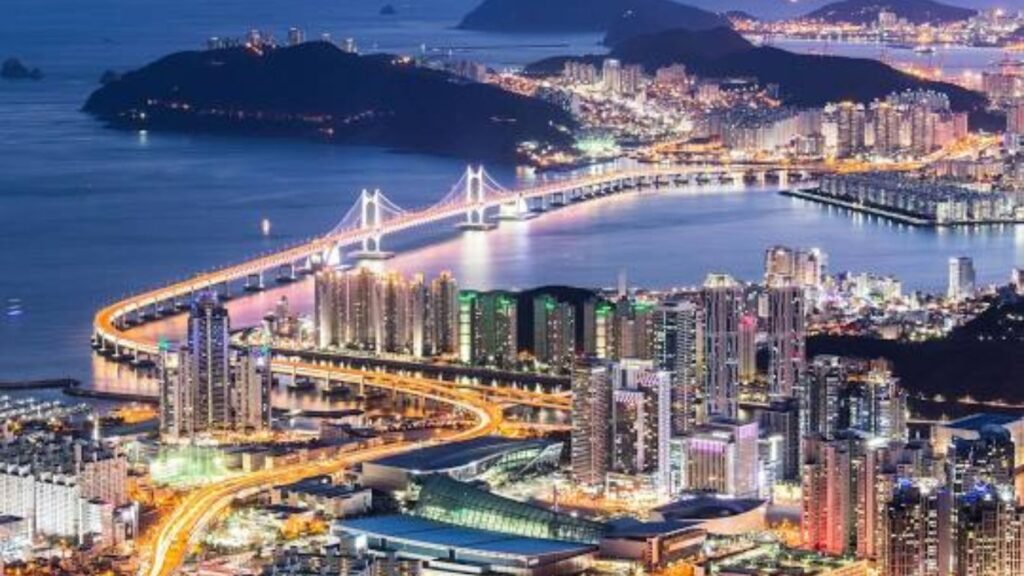
Busan is where the ocean meets the mountains—and city life finds a gentler, more grounded rhythm. Often overshadowed by Seoul, South Korea’s second-largest city is finally getting the recognition it deserves. In 2025, Busan emerges as one of the most refreshing top Asian cities for travelers, thanks to its coastal charm, dynamic culture, and laid-back vibrancy.
Start your journey at Gamcheon Culture Village, a hillside labyrinth of pastel-colored homes, street murals, and indie art galleries. From there, head to Jagalchi Fish Market, where the sights and smells of Korea’s seafood capital come alive. It’s gritty, authentic, and totally unforgettable.
Unlike its bigger sibling Seoul, Busan invites slowness. Spend a morning walking the scenic Igidae Coastal Trail, where rocky cliffs and calm sea views create a meditative backdrop. Or relax on Haeundae Beach, a wide stretch of sand where locals and travelers converge over street food and summer festivals.
The city’s public transit is clean and efficient, connecting beach towns to bustling downtown districts like Seomyeon, which comes alive at night with karaoke bars, boutique shops, and hidden speakeasies.
Busan isn’t just a summer escape—it’s a city with soul. From film festivals and traditional temples to high-speed trains and high-rise cafes, it’s a blend of contrasts that works beautifully. For those who want the richness of Korean culture without the capital city intensity, Busan is absolutely one of the top Asian cities for travelers this year.
Key Trends Shaping Urban Exploration in Asia
Sustainable Urban Development
Sustainability is no longer optional—it’s a defining feature of the top Asian cities for travelers in 2025. As the impacts of climate change become more visible, Asia’s leading cities are responding with bold green initiatives that merge environmental responsibility with enhanced livability.
In Singapore, vertical gardens and solar-powered skyscrapers aren’t futuristic ideals—they’re everyday features. Taipei continues to lead with bike-friendly urban zones and recycling systems so efficient they’re studied globally. Tokyo is investing in hydrogen-powered buses and zero-emissions zones, while Bangkok is transforming underutilized urban areas into green parks designed to manage floodwaters.
These efforts do more than reduce carbon footprints—they make cities more enjoyable to explore. Tree-lined walking paths, breathable air, and clean transport options all contribute to more meaningful urban experiences. Travelers who value sustainability now prioritize destinations that reflect these values—and Asia is delivering.
Technological Integration
Asia is the global benchmark for smart cities—and it’s reshaping how travelers navigate, engage, and experience urban life. From AI-enhanced infrastructure to seamless mobile payments, the top Asian cities for travelers are defined as much by innovation as they are by tradition.
Seoul is a standout, offering real-time subway tracking, smart waste systems, and high-speed internet in nearly every corner. In Tokyo, vending machines can scan faces and suggest drinks based on mood and temperature. Shanghai and Singapore are investing in predictive crowd control systems and traffic analytics that optimize city flow in real time.
This tech-forward approach makes urban exploration smoother than ever. Travelers can rely on digital maps, contactless payments, translation apps, and ride-sharing platforms without skipping a beat. For solo travelers and first-timers, these features aren’t just conveniences—they’re game-changers.
Experiential Travel and Local Immersion
Modern travelers are trading checklists for connection. The top Asian cities for travelers are responding with experiences that prioritize authenticity over aesthetic—and locals are becoming co-creators in this shift.
In Hanoi, travelers can take cooking classes in family kitchens. In Osaka, artisan-led food tours delve into the cultural roots of every dish. Busan offers temple stays and hands-on craft workshops that reveal deeper dimensions of Korean culture. Even bustling Jakarta has joined the trend with community-run walking tours in Kota Tua and M Bloc Space.
What sets these cities apart is their willingness to hand travelers the keys—to let them in on the rituals, routines, and relationships that make up local life. This isn’t passive tourism; it’s participatory. And it’s changing the way people remember and revisit the places they love.
Essential Tips for Urban Explorers in Asia
Navigating Public Transportation
Efficient, fast, and often futuristic, public transport in the top Asian cities for travelers is part of the experience—not just a means to an end. But each city operates a little differently, and understanding the basics can make your exploration seamless.
In Tokyo, the train system is vast and impeccably punctual. Grab a Suica or Pasmo card to zip through metro gates. Seoul’s subway is a tech-lover’s dream, complete with Wi-Fi, touchscreen kiosks, and multilingual announcements. Singapore’s MRT is compact and color-coded, with stations that feel more like shopping malls than transit hubs.
Ride-hailing apps are essential tools—Grab is dominant in Southeast Asia, GO-JEK rules in Jakarta, and LINE Taxi is a favorite in Taipei. In cities where English signage isn’t guaranteed, offline navigation apps like Maps.me, Google Translate, and local apps like Naver Map in Korea are game changers.
Explorers should also consider day passes and transit apps to plan routes ahead. These tools empower travelers to dive deeper into cities without the stress of getting lost—or worse, getting stuck.
Respecting Local Customs and Etiquette
Cultural respect isn’t just polite—it’s a key that opens doors to more meaningful interactions. The top Asian cities for travelers reflect deeply rooted customs, and understanding even a few social norms can elevate your entire journey.
For example, in Thailand, never point your feet at people or religious objects—it’s seen as disrespectful. In Japan, silence on trains is appreciated, and bowing is a sign of politeness. In South Korea, receiving items with two hands is a gesture of respect, while tipping remains uncommon.
Modest dress is important in religious areas, especially in Indonesia and Malaysia, where mosques may require head coverings and long sleeves. When visiting temples across Vietnam and Cambodia, removing shoes before entry is non-negotiable.
A few local phrases—even just “hello” and “thank you”—can go a long way. People in cities like Hanoi and Busan often appreciate the effort, even if your pronunciation isn’t perfect. Courtesy crosses all language barriers.
In the end, being a responsible traveler isn’t about memorizing rules—it’s about approaching each city with humility, curiosity, and care.
Staying Safe and Connected
Urban exploration is as much about preparation as spontaneity. While the top Asian cities for travelers are generally safe, a few precautions ensure a worry-free experience—especially for solo adventurers.
Start with connectivity. Picking up a local SIM card or eSIM on arrival gives you instant access to maps, translation tools, and ride-sharing apps. In places like Singapore, Tokyo, and Seoul, you’ll rarely find yourself without Wi-Fi. But in areas like Jakarta or Bangkok, cellular data is your lifeline.
When it comes to safety, common sense goes a long way. Avoid dark alleys at night, especially in less-touristed districts. In crowded markets and metro stations, be mindful of pickpockets—Hanoi’s Old Quarter and Bangkok’s Chatuchak Market can be hotspots. Use anti-theft bags and keep valuables zipped and close.
Emergency services vary by city, so save local hotline numbers to your phone. Also, check whether the destination requires travel insurance—some countries (like Japan and Thailand) are making it mandatory for entry.
For women and solo travelers, many cities—like Taipei, Singapore, and Osaka—are ranked among the safest in the world. Still, staying informed, aware, and connected gives you full control of your journey.
Conclusion: Embracing Asia’s Urban Pulse
Urban travel in Asia isn’t just a trend—it’s a movement. The top Asian cities for travelers in 2025 are no longer defined solely by monuments or shopping streets. They are immersive environments where tradition and transformation dance side by side. They invite you not just to visit, but to participate—to taste, listen, question, and connect.
Whether you’re sipping neon-lit cocktails in Tokyo, wandering temple courtyards in Hanoi, or cycling through Taipei’s leafy boulevards, each city offers a distinct tempo—and it’s that rhythm, that living, breathing energy, that stays with you long after you’ve returned home.
As Asia’s cities continue to evolve, one thing remains constant: the sheer depth of experiences waiting to be uncovered. From digital nomads to culture seekers, from backpackers to boutique hotel aficionados, the region offers something rare—cities that challenge, welcome, and inspire all at once.
So pack your curiosity. Take your time. And let Asia’s urban pulse guide your next adventure.
FAQ
What are the top Asian cities for travelers in 2025?
Cities like Tokyo, Seoul, Singapore, Bangkok, Hong Kong, Taipei, Kuala Lumpur, Hanoi, Osaka, Jakarta, and Busan stand out for their rich blend of heritage, modernity, culinary depth, and cultural experiences.
Why is urban exploration in Asia gaining popularity?
Travelers are shifting from traditional sightseeing to immersive, local-driven experiences. Asia’s cities offer compact walkable districts, world-class public transport, and diverse cultural layers that make every step meaningful.
Is it safe to explore Asian cities solo?
Yes. Cities like Taipei, Singapore, Osaka, and Seoul are consistently ranked among the safest in the world. Still, standard safety practices are recommended—especially in crowded markets or at night.
What’s the best way to get around these cities?
Public transit is usually excellent—subway systems in Tokyo, Seoul, and Singapore are clean, fast, and foreigner-friendly. Ride-hailing apps, bike shares, and walking are also efficient, especially in compact neighborhoods.
How can I experience local culture while exploring?
Join walking tours, attend street festivals, take cooking classes, or explore traditional markets. Engaging directly with locals—whether through workshops, homestays, or guided neighborhood experiences—makes for deeper, more authentic travel.
